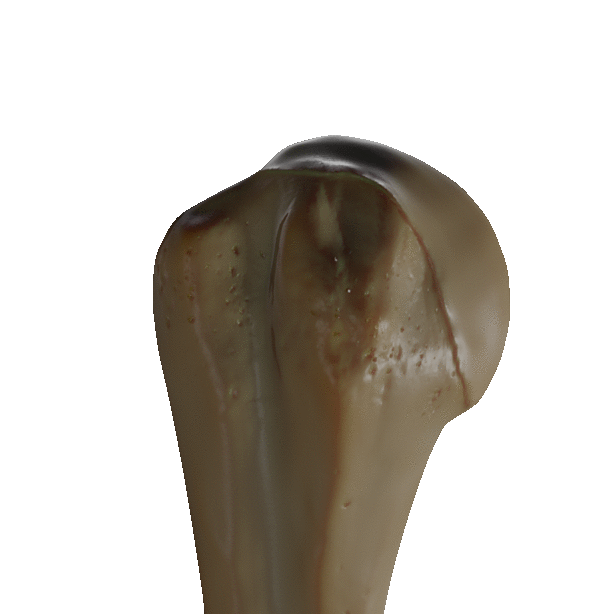|
Hispanopithecus Laietanus
''Hispanopithecus'' is a genus of apes that inhabited Europe during the Miocene epoch. It was first identified in a 1944 paper by J. F. Villalta and M. Crusafont in . Anthropologists disagree as to whether ''Hispanopithecus'' belongs to the subfamily Ponginae (most closely related to modern orangutans) or Homininae (most closely related to gorillas, chimpanzees, and humans). The genus contains two known species: ''Hispanopithecus laietanus'' and ''Hispanopithecus crusafonti''. The fossils have been dated to between 11.1 and 9.5 million years ago. Morphology Postcranial features exhibit morphological features that suggest a mosaic of locomotive behaviors. The structure of the cortical bone at the proximal and distal ends of the femur, particularly the neck of the femoral head, indicate an orthograde body plan. Recovered vertebrae indicate a relatively short, wide, and deep thorax support the orthograde posture for climbing, clambering, and feeding in an arboreal environment. The ... [...More Info...] [...Related Items...] OR: [Wikipedia] [Google] [Baidu] |
Tortonian
The Tortonian is in the geologic time scale an age or stage of the late Miocene that spans the time between 11.608 ± 0.005 Ma and 7.246 ± 0.005 Ma (million years ago). It follows the Serravallian and is followed by the Messinian. The Tortonian roughly overlaps with the regional Pannonian Stage of the Paratethys timescale of Central Europe. It also overlaps the upper Astaracian, Vallesian and lower Turolian European land mammal ages, the upper Clarendonian and lower Hemphillian North American land mammal ages and the upper Chasicoan and lower Huayquerian South American land mammal ages. Definition The Tortonian was introduced by Swiss stratigrapher Karl Mayer-Eymar in 1858. It was named after the Italian city of Tortona in the Piedmont region. The base of the Tortonian Stage is at the last common appearance of calcareous nanoplankton '' Discoaster kugleri'' and planktonic foram '' Globigerinoides subquadratus''. It is also associated with the short normal pol ... [...More Info...] [...Related Items...] OR: [Wikipedia] [Google] [Baidu] |
Journal Of Biogeography
The ''Journal of Biogeography'' is a monthly peer-reviewed scientific journal that was established in 1974. It covers aspects of spatial, ecological, and historical biogeography. The founding editor-in-chief was David Watts, followed by John Flenley (1936–2018), Philip Stott (1987-2004), Robert J. Whittaker (2004–2015), and Peter Linder (University of Zurich; 2015–2019). As of early 2023, the editor-in-chief was Michael N Dawson (University of California, Merced). Since 2024, the journal has changed its editorial board The editorial board is a group of editors, writers, and other people who are charged with implementing a publication's approach to editorials and other opinion pieces. The editorials published normally represent the views or goals of the publicat ..., and the new senior editors are Arley Muth, Luciano Bosso, Alison Nazareno, and Diogo Provete. Abstracting and indexing The journal is abstracted and indexed in: References External links * {{DEFAULTSO ... [...More Info...] [...Related Items...] OR: [Wikipedia] [Google] [Baidu] |
Ulna
The ulna or ulnar bone (: ulnae or ulnas) is a long bone in the forearm stretching from the elbow to the wrist. It is on the same side of the forearm as the little finger, running parallel to the Radius (bone), radius, the forearm's other long bone. Longer and thinner than the radius, the ulna is considered to be the smaller long bone of the lower arm. The corresponding bone in the Human leg#Structure, lower leg is the fibula. Structure The ulna is a long bone found in the forearm that stretches from the elbow to the wrist, and when in standard anatomical position, is found on the Medial (anatomy), medial side of the forearm. It is broader close to the elbow, and narrows as it approaches the wrist. Close to the elbow, the ulna has a bony Process (anatomy), process, the olecranon process, a hook-like structure that fits into the olecranon fossa of the humerus. This prevents hyperextension and forms a hinge joint with the trochlea of the humerus. There is also a radial notch for ... [...More Info...] [...Related Items...] OR: [Wikipedia] [Google] [Baidu] |
Humerus
The humerus (; : humeri) is a long bone in the arm that runs from the shoulder to the elbow. It connects the scapula and the two bones of the lower arm, the radius (bone), radius and ulna, and consists of three sections. The humeral upper extremity of humerus, upper extremity consists of a rounded head, a narrow neck, and two short processes (tubercles, sometimes called tuberosities). The body of humerus, body is cylindrical in its upper portion, and more prism (geometry), prismatic below. The lower extremity of humerus, lower extremity consists of 2 epicondyles, 2 processes (trochlea of the humerus, trochlea and capitulum of the humerus, capitulum), and 3 fossae (radial fossa, coronoid fossa, and olecranon fossa). As well as its true anatomical neck, the constriction below the greater and lesser tubercles of the humerus is referred to as its Surgical neck of the humerus, surgical neck due to its tendency to fracture, thus often becoming the focus of surgeons. Etymology The word ... [...More Info...] [...Related Items...] OR: [Wikipedia] [Google] [Baidu] |

